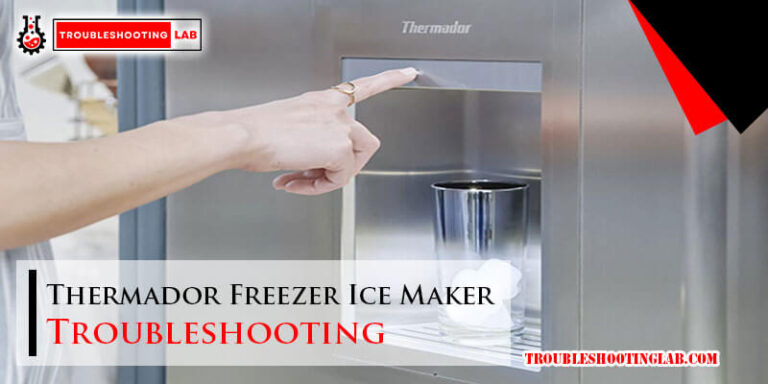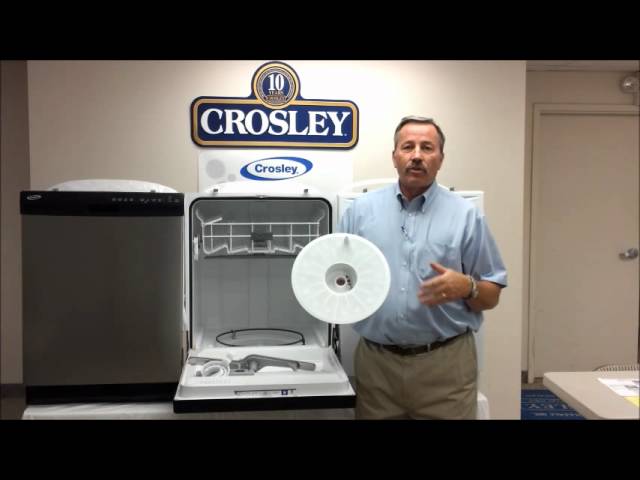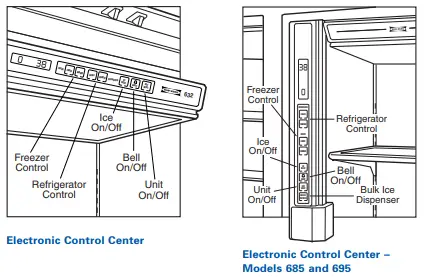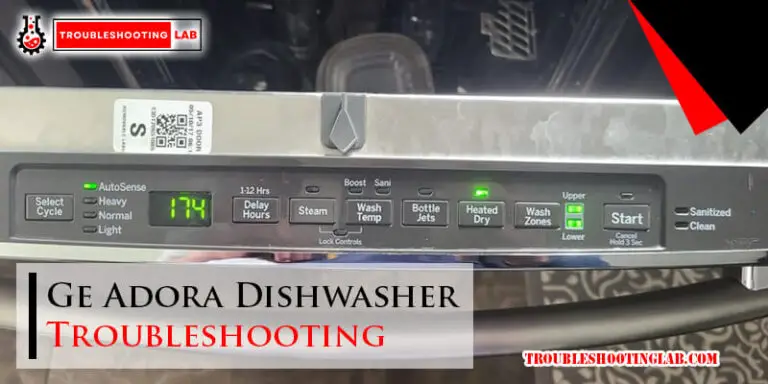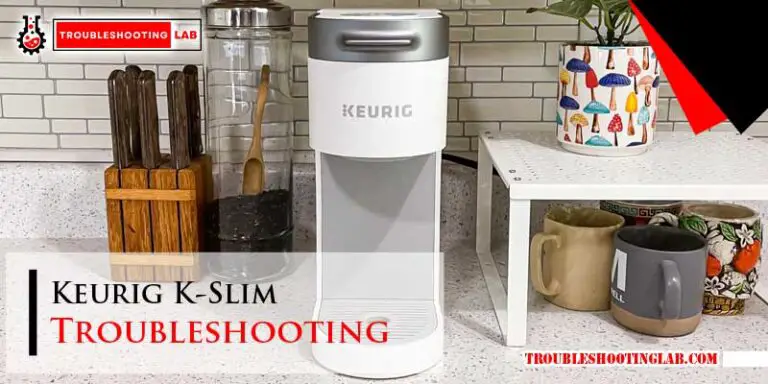Blue Star Oven Troubleshooting: Quick Fixes for Common Issues
Is your Blue Star oven acting up and leaving you frustrated? Whether it’s not heating properly, making strange noises, or refusing to turn on, dealing with a faulty oven can quickly disrupt your daily routine.
But don’t worry—you’re not alone, and you’ve come to the right place. In this guide, we’ll walk you through common Blue Star oven issues and show you simple troubleshooting steps you can try at home. By the end of this article, you’ll feel more confident about tackling the problem or knowing exactly when to call for professional help.
Ready to get your oven back on track? Let’s dive in!

Credit: www.twinappliancesinc.com
Common Ignition Problems
Blue Star ovens are known for their durability and performance. Yet, like any appliance, they can face occasional ignition issues. These problems can disrupt cooking and lead to frustration. Understanding the common causes can help fix these issues quickly. Below, we explore some frequent ignition problems and their solutions.
Burner Fails To Ignite
A burner that doesn’t ignite can be frustrating. This issue often occurs due to clogged burner ports. Grease, food debris, or dirt can block gas flow. Clean the burner with a soft brush to remove obstructions. Also, check if the igniter spark is visible. A weak or absent spark may indicate a faulty igniter. Replace the igniter if cleaning does not help.
Delayed Ignition Sounds
Hearing a “whoosh” or loud pop during ignition? This is a delayed ignition issue. It happens when gas builds up before igniting. A dirty igniter or burner ports could be the reason. Inspect and clean both to ensure smooth gas flow. Incorrect gas pressure may also cause delays. Contact a professional to adjust the gas supply if needed.
Weak Flame Issues
A weak or uneven flame can affect cooking efficiency. This problem often stems from restricted gas flow. Check the burner ports and clean them if blocked. Low gas pressure can also weaken the flame. Ensure the gas valve is fully open. If the issue persists, inspect the regulator for faults. A damaged regulator may need replacement to restore proper flame strength.
Temperature Control Challenges
Struggling to get your Blue Star oven to cook just right? You’re not alone. Temperature control issues can be frustrating and lead to undercooked meals or burnt disasters. Let’s tackle the most common challenges step-by-step.
Oven Overheats
Is your oven turning your perfect recipe into charcoal? Overheating is often caused by a faulty thermostat. The thermostat is responsible for telling the oven when to stop heating, and if it’s broken, the oven won’t know when to stop.
- Check if the thermostat sensor is clean and positioned correctly inside the oven. A dirty sensor can misread the temperature.
- Try recalibrating the thermostat by consulting your user manual. Some models allow you to adjust the temperature settings directly.
- If recalibration doesn’t work, replacing the thermostat might be necessary. This requires professional help to ensure safety.
Pro tip: Use an oven thermometer to compare the actual temperature to the set temperature. It’ll save you from guessing.
Oven Not Heating Enough
Does your oven refuse to heat properly, leaving your dishes half-cooked? This issue might stem from a malfunctioning heating element. The heating element is what generates heat, and if it’s damaged or worn out, your oven won’t reach the desired temperature.
- Inspect the heating element for visible damage like cracks or burns. If you spot anything unusual, it likely needs replacement.
- Test your oven’s power settings. Sometimes, a loose connection can prevent the heating element from working efficiently.
- Clean the heating element and the surrounding area. Grease buildup can interfere with proper heating.
Ever tried preheating your oven for longer? It might help in emergencies, but it’s not a long-term fix. A damaged heating element will only worsen over time.
Uneven Cooking Results
Are parts of your dish perfectly cooked while others remain raw? Uneven cooking is often caused by poor air circulation or inconsistent temperature distribution. This can turn even the simplest recipes into a guessing game.
- Start by checking the oven racks. Uneven placement or overcrowding can block hot air from circulating properly.
- Examine the oven door seal for wear and tear. A damaged seal lets heat escape, affecting even cooking.
- Don’t ignore the importance of cookware. Dark, heavy pans absorb heat better, while glass or shiny metal can reflect it unevenly.
Imagine baking cookies where half are golden brown and the other half are pale. Would you eat them? Fixing uneven cooking ensures consistent results every time.
Temperature control is key to great cooking. By addressing these common challenges, you’ll turn your Blue Star oven into a reliable kitchen companion. Which troubleshooting tip will you try first?
Gas Supply Concerns
Gas supply issues can be a common headache for Blue Star oven owners. If your oven isn’t functioning properly, the gas supply is often the first thing you should check. Let’s look at some common gas-related problems and how to address them.
Gas Smell During Operation
A gas smell while your Blue Star oven is running should never be ignored. This could point to a leak, which is dangerous. Turn off the oven immediately and check for loose connections in the gas line.
If you’re unsure how to inspect the connections, call a professional technician. Also, consider investing in a gas detector for peace of mind. It’s a small step that can save you from a big accident.
Inconsistent Gas Flow
Does your oven’s flame flicker or struggle to stay steady? Inconsistent gas flow might be the culprit. This can happen if the gas line is partially blocked or the regulator is malfunctioning.
Start by checking if the gas valve is fully open. If it is, clean the burners to ensure they’re not clogged. Persistent issues may require replacing the regulator or inspecting the gas line for obstructions.
Pilot Light Goes Out Frequently
Dealing with a pilot light that keeps going out can be frustrating. This often points to either a weak gas supply or a draft hitting the flame. First, check if the pilot light orifice is clean and free of debris.
If that doesn’t solve it, look for any drafts near the oven. Even a slight breeze from a window or door can extinguish the flame. If the problem persists, it could be a faulty thermocouple, which might need professional attention.
Have you faced any of these gas supply concerns? Addressing them promptly not only ensures your oven works efficiently but also keeps your kitchen safe. Take action today and enjoy hassle-free cooking!
Door And Seal Problems
Dealing with door and seal problems in your Blue Star oven can be frustrating, especially when you’re in the middle of preparing a meal. A poorly closing door or a worn-out seal can lead to uneven cooking and wasted energy. The good news? Most of these issues are easier to fix than you might think. Let’s break it down.
Oven Door Won’t Close Properly
If your oven door refuses to shut tightly, don’t ignore it. A loose or misaligned door can disrupt cooking temperatures, leaving your meals undercooked or overcooked. Start by checking the hinges. Are they bent or loose?
Sometimes, debris or grease buildup around the hinge area can block the door. Clean the hinges thoroughly using a damp cloth and a mild cleaner. If the hinges are damaged, you may need to replace them. You can find replacement hinges online or at your local appliance store. Just make sure they match your Blue Star oven model.
Heat Escaping Through Gaps
Noticing heat escaping from your oven? That’s a problem. Those gaps not only waste energy but also make it harder to maintain the right temperature. Check for cracks or wear and tear around the edges of the oven door seal.
Perform a simple test: close the door on a piece of paper. If you can easily pull the paper out, the seal isn’t tight enough. This is often a sign that the gasket (the soft, rubbery part lining the door) needs attention. A failing seal can cause uneven cooking, which is the last thing you need during family dinner prep.
Damaged Door Seal Replacement
Replacing a damaged door seal might sound intimidating, but it’s actually straightforward. First, identify the type of seal your oven uses. You’ll usually find the model number inside the oven door or on the oven frame.
Most seals are held in place by small clips or grooves. Carefully pull the old seal out, starting at one corner. Clean the groove thoroughly before installing the new seal—it’s crucial to remove all grease and residue for a proper fit. Then, press the new seal into place, ensuring it’s snug and secure.
Test the door again after replacing the seal. Does it close tightly and hold heat? If yes, you’re all set. If not, double-check for alignment issues or gaps. A well-sealed door makes a noticeable difference in cooking performance and energy efficiency.
Are you facing one of these issues right now? Don’t hesitate to take action. A little effort today can save you from bigger headaches (and costs) down the line.
Electrical Component Failures
Blue Star ovens are known for their reliability, but like any appliance, they can run into issues. Electrical component failures are one of the most common problems users encounter. Knowing how to troubleshoot these issues can save you time, money, and frustration. Let’s dive into some of the most frequent electrical problems and how you can address them.
Control Panel Not Responding
Imagine this: you’re ready to bake your favorite dish, but the oven’s control panel refuses to cooperate. This issue often stems from a power connection problem or a faulty control board. Begin by checking if the oven is securely plugged into the outlet.
Verify if the circuit breaker has tripped. If the power supply checks out, the control board might be damaged and require replacement. A quick tip: before calling for professional help, try resetting the oven by turning off the power for a few minutes and then restarting it.
Display Errors Or Malfunctions
Is your oven showing odd error codes or a blank screen? This could signal issues with the display module or wiring connections. To troubleshoot, consult your user manual for the meaning of specific error codes. Some codes can be resolved by performing a simple reset.
If the screen remains unresponsive, inspect the wiring behind the display panel. Loose or damaged wires often disrupt the connection. Keep a screwdriver handy if you feel confident opening the panel, but remember to disconnect the power first for safety.
Issues With Interior Light
A dark oven interior can make cooking tricky. If your Blue Star oven’s interior light isn’t working, the bulb might have burned out. Thankfully, replacing it is straightforward. Check your oven’s manual to find the correct bulb size and type.
If the bulb is fine but still doesn’t light up, the issue might lie in the light socket or wiring. Test the socket with a multimeter to check for electrical continuity. If the socket fails the test, it’s time to replace it. Wondering where to start? Many hardware stores carry replacement parts, or you can order them online.
Electrical problems can feel daunting, but most can be solved with basic troubleshooting steps. Have you faced any of these issues before? What worked for you? Share your experience to help others tackle their oven challenges!

Credit: www.youtube.com
Cleaning And Maintenance Tips
Keeping your Blue Star oven clean and well-maintained ensures it works efficiently. Regular cleaning also extends the oven’s lifespan and prevents common issues. Here are some practical cleaning and maintenance tips to help you keep your oven in top condition.
Removing Grease Build-up
Grease build-up can affect your oven’s performance over time. To remove it, use a damp cloth with mild dish soap. Avoid abrasive cleaners that might damage the surface. Wipe down the oven interior after each use to prevent grease accumulation. For tougher stains, use a baking soda paste and gently scrub the area. Rinse thoroughly to avoid residue.
Cleaning Burners And Grates
Burners and grates often collect food particles and grime. Remove them from the oven for a thorough cleaning. Soak them in warm, soapy water for 15-20 minutes. Use a soft brush to scrub off any stuck-on debris. Make sure the burners and grates are completely dry before placing them back in the oven. This prevents rust and ensures proper function.
Inspecting For Wear And Tear
Regularly inspect your oven for signs of wear and tear. Check the door seal for cracks or gaps that might affect heat retention. Look at the knobs and control panel for any loose parts. If you notice damage, address it promptly to prevent further issues. Keeping an eye on these details helps your oven run smoothly.

Credit: www.twinappliancesinc.com
Conclusion
Fixing your Blue Star oven doesn’t have to be overwhelming. Start with simple checks like power and settings. Address common issues step by step for effective results. Regular maintenance helps avoid future problems. Clean the oven and inspect parts routinely for smooth operation.
If problems persist, contact a professional for safe repairs. A well-maintained oven lasts longer and performs better. Use these tips to keep your appliance in great condition. Troubleshooting saves time and keeps your kitchen running smoothly. Always prioritize safety while handling any repairs or checks.

